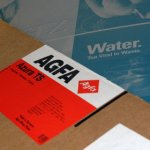We have processless plates that are ecomaxx-t dig therm plates..we just got this system two weeks ago, the tests that we did went great. We have two heidelbergs 4/color mov with alcolor damp, (which is alcohol free) and a two color speedmaster with compacts. Here's the problem!
1. The mov runs mostly 4/color when starting out i have no problems with the print quality, as the run goes on i will start losing image in the red unit
on solids. You can call it blinding but it looks to, i dont know how to say it.
I guess mushy on the plate.
2. Both presses are losing fine screen dots in the black if it is printing just that color.
3. Sometimes not all the time i have problems rolling up with dampeners getting rid of all the emulsion off plate. But not to bad.
There is more issues but these are the worst. Of course when i called thech he is telling me it is calcium in the rollers, and we are using the wrong roller wash and, the wrong ink. Needless to say we are using all of their brand on the presses. Plus using the ink that they recommended.
So is there anybody out there who has a solution to these issues. I would like to hear from pressman first hand if poss. Please,please salesman out there we are not going to buy a new system but your comment on solving the problem would be appreciated.
Thanks
mike
1. The mov runs mostly 4/color when starting out i have no problems with the print quality, as the run goes on i will start losing image in the red unit
on solids. You can call it blinding but it looks to, i dont know how to say it.
I guess mushy on the plate.
2. Both presses are losing fine screen dots in the black if it is printing just that color.
3. Sometimes not all the time i have problems rolling up with dampeners getting rid of all the emulsion off plate. But not to bad.
There is more issues but these are the worst. Of course when i called thech he is telling me it is calcium in the rollers, and we are using the wrong roller wash and, the wrong ink. Needless to say we are using all of their brand on the presses. Plus using the ink that they recommended.
So is there anybody out there who has a solution to these issues. I would like to hear from pressman first hand if poss. Please,please salesman out there we are not going to buy a new system but your comment on solving the problem would be appreciated.
Thanks
mike














